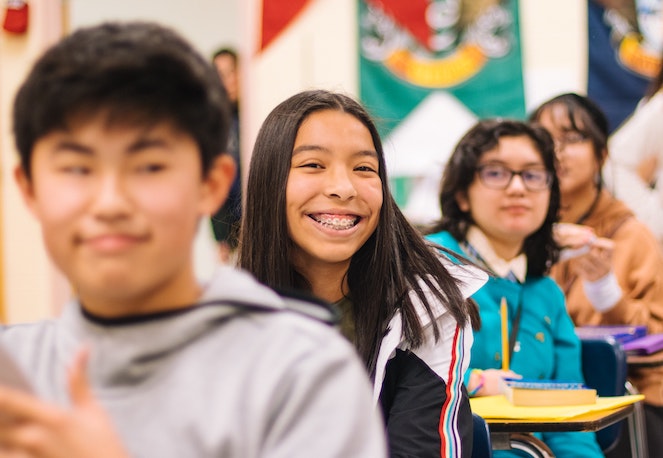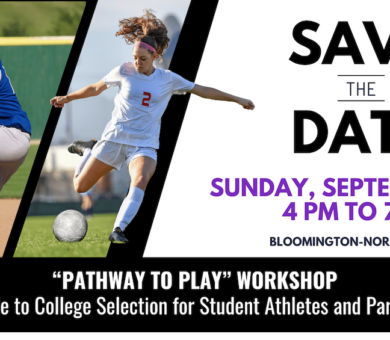Special Education and Student Athletes

Many students struggle academically throughout their educational careers. How do they receive the appropriate support to access content and find success? The two most common practices for students to receive help during kindergarten through high school would be through an IEP or a 504 plan. Individualized Education Programs (IEPs) are legal documents that lay out specific goals and the services necessary to achieve said goals. 504 plans are legal documents that lay out the specific accommodations necessary for a student to access the content and materials.
504 Plan
A 504 Plan is established when there are documentation and data that support a student who requires accommodations but does not require specially designed instruction (SDI). 504 Plans are often decided if a student has an outside diagnosis that doesn’t impact their ability to access classroom activities but does impact their ability to demonstrate that knowledge.
To clarify, accessing classroom activities means the ability to receive information, like participating in a class discussion. Demonstrating their understanding of the knowledge means they can articulate what they learned through completing an exit ticket, assignment or assessment. It can also be a route taken while phasing a student out of an IEP. Accommodations are still needed for testing, but the student no longer requires SDI.

IEPs and Evaluations Summary
As stated within the Individuals with Disabilities Education Act (IDEA), an IEP is defined as “a written statement for each child with a disability that is developed, reviewed, and revised in a meeting in accordance with section 300.320 through 300.324.”1″ IEPs go into effect after an educational team has determined that a student qualifies for individualized education services through an evaluation.
The evaluation determines the student’s eligibility for receiving special education services. If you are concerned that your child is not accessing the general education content and curriculum due to a specific skill or deficit, you start the special education process by providing a written request to your school district. Please note that if your child is at a private school, you should go to the district where the private school is located.
An Educational Evaluation is a team of people that create a plan and then assess a student to determine if they have a disability or learning difference that is impacting their ability to access the material in the classroom. If a student qualifies, the next step is writing the IEP which will detail supports and services to address the needs that were identified in the evaluation.
These two documents go hand in hand, but an evaluation must be renewed every 3 years while an IEP must be renewed every year or anytime there is a new evaluation. An IEP is a specific plan as to how the educational team will provide opportunities for that student to be able to access classroom content and material and demonstrate their understanding. This also determines the location and duration of service.

IEPs Within the Classroom
Within the classroom, all students should have opportunities to be successful. An IEP legally mandates specific instruction, accommodations and/or modifications, and a certain number of minutes that each area or goal needs to be addressed within the school day. There is also a statement in all IEPs with the specific purpose of declaring students be able to participate in any and all extracurricular activities even though they are on an IEP.
For example, a student can’t be denied the opportunity to try out for a sports team or audition for a school play solely based on the fact they are on an IEP. This also does not guarantee that a student on an IEP must make a sports team or be cast in a school play solely because they are on an IEP.
IEPs are intended to promote as much independence as possible. One of my first colleagues always used to say, “My job as a special educator is to work myself out of a job.” This relates to the least restrictive environment (LRE): every student’s right to be involved in general education classes to the maximum extent possible.
The whole purpose of this section is so that schools can’t choose to just stick a student in a separate class and take them away from the instruction their peers receive without data to indicate this is necessary. All in all, IEPs and special education services are intended to allow students to access a free, appropriate and public education (FAPE).

Accommodations and Modifications
All educators and IEP team members generally desire the same goal: that the student is able to be successful. Accommodations and/or modifications can be determined through an IEP that will allow a student to access content or material that they wouldn’t otherwise be able to. For clarification, an accommodation changes how information or instruction is delivered. A modification is changing the learning objective.
An appropriate accommodation would be that a student has access to a calculator if data has determined that a student is able to access the grade level multistep concepts. For example, If the goal of a lesson is to use a mathematical formula to solve a word problem, providing a child a calculator would allow them to work through the grade level problem without being hindered by challenges with basic calculation. The calculator would allow them to keep pace with their classmates and continue growing in their mathematical knowledge.
In writing, a student may be provided a graphic organizer in order to set up their ideas for an essay. This allows a student to receive structured support so they have a plan to brainstorm and plan their essay.
An appropriate modification would be to provide only three options on a multiple-choice test instead of four. It could also reduce the number of questions or the amount of work needed to be done.
Modifications may allow a student to share their research on a topic by creating a poster or slideshow rather than writing a paper. Modifications should only be introduced if there is data to support that, due to the student’s eligibility category(ies), as defined in the evaluation, a student’s ability to complete the expected task is impacted. Remember, the goal is to allow the student to access the content and material with the least restrictions possible.

How Can an IEP Unintentionally Set Up a Student for Failure?
Our vision is for all students to grow up to be as independent as possible. The desired outcome is to fade out support (services, accommodations, or modifications) as a student no longer needs them. Remember, IEP needs must be supported with data. Low expectations in high school can lead to devastating effects at the college level.
I have seen, firsthand, IEP teams unintentionally hindering students on IEPs. For example, I have seen a modification that says a student should not receive a grade below a 60%. I have then watched said student learn that he no longer needed to make efforts when things got difficult because he would pass anyway. When I addressed my concerns with the team, I was told, “His only chance is football. You want to take that away from him?”
My response to these types of situations is pretty much summed up in the idea that I refuse to be a part of an action that sets students up to grow into some of the negative stereotypes around people with disabilities. Far too often, these situations lack teaching a student motivation, accountability, and perseverance.
The intent is good: we want the student to make it to (insert college, university, or professional sports team), but we fail to address the actual purpose of an IEP: to allow a student access to general education classroom content and material and demonstrate their understanding.
You might be asking why this matters if the student is really good at her sport. You might be asking what’s the harm in allowing a student to fulfill their dreams. My perspective is that, by asking a student to attend, engage and find success in the classroom, I am not asking that student to squelch their dreams of future athletics. It’s not one or the other.
When I coached middle school athletics, my informational meetings always began with writing the word “student-athlete” on the board. I asked the student which comes first, student or athlete? We then had a discussion to focus on the concept that academics have to come first. I have benched star players due to failing until they earned their way out of it.
Every, single, time there was a consequence, I watched these student-athletes rise to the occasion and put in the effort because they bought into the payoff. You’re probably thinking, “Why does your middle school coaching experience matter if we’re talking mainly about high school student-athletes looking to transition to college sports?” Habits start young.
It’s much easier for me to teach a student who is in middle school rather than in high school. And what if that doesn’t happen? When students breeze through high school with minimal academic effort because of lack of consequences, and if they happen to get into college to play sports, how will they keep their scholarship or position on the team if they don’t know how to study?
How do they learn that classes matter and grades have consequences if they don’t learn that at a young age? How do students appropriately ask for services at college that they legally have the right to ask for if they have never learned how to advocate?
Remember, we all have the same goal. We want our student-athletes to be successful and independent. That might mean setting higher expectations. That might mean putting academics before an athletic passion. However, remember that, in doing so, your student is more likely to have the skills to be a successful student-athlete.

Advocating During K-12 Schooling
It is important that parents/guardians familiarize themselves with the Procedural Safeguards that are provided each year at the IEP meeting. These describe all of your rights as the parent of someone who receives special education services.
Talk openly with your IEP team at school about your concerns and desires for your child. If you aren’t sure if you understand everything, reach out to a parent mentor or advocate.
You always have the right to bring someone to the meeting as an advocate to help process or talk through things as needed. It is important that both parents/guardians and school personnel remember that everyone has the best intention for the student in mind, especially during tense situations.
Advocating at the Post-Secondary Level
If a student graduates high school on an IEP, he or she has the right (and responsibility) to take the Accommodations and Modifications section into the Disability Services office at their college.
The student should articulate their needs and why they need the accommodation. For example, “I need the accommodation of small group testing because my ADHD impacts my ability to focus.” As long as there is paperwork, the Disability Services will offer the accommodations they are able to. It is important that, since the student is an adult, they are the ones to articulate this rather than a parent/guardian.

How Will an IEP Impact My Ability to Succeed in College?
It’s normal for a student (and a family) to go through some emotions throughout this process. Some families feel relief at finding an answer to why their child has been struggling and are hopeful to create a plan to address it. Other students (and families) feel shame that something is wrong with them or that a college will see an IEP as a weakness.
One of the most common misconceptions is that having an IEP draws negative attention from colleges. Many students feel shame in receiving IEP services. Unfortunately, this can lead to students denying services and setting themselves up for failure.
College is already an increase in rigor in academics and sports. If you don’t receive the services in high school, it’s much more difficult (and can be costly) to begin services for the first time in college. This can also lead to adding additional, unnecessary stress to a student-athlete’s life, which could be avoided by receiving services appropriate for them to find success.
Teaching inclusion classes, I used to start my years off with the following activity. Lollipops would be taped to the highest point on the whiteboard/smartboard/chalkboard. I would then say, “Okay, everyone go get a lollipop.” I would observe all the tall students grab theirs with ease. Some of them would grab one for a friend. Some students jumped to grab theirs. Other students were lifted by a friend or stood on a chair. It led to a discussion that we all have different tools and strategies we need to be successful.
Since I am short, I would need a chair or a step stool to reach a lollipop, while another student might not. Then we would discuss the concept that fairness is not always equal in order to prepare them for some of the support that I would be providing students. I referred to their services/accommodations/modifications as their tool to be successful; their step-stool. This was an effort to help students feel more at ease with receiving services.
Colleges are well versed in IEPs and 504 plans. In fact, all colleges have an office regarding disability services to help students navigate. Services look very different in college, but you still qualify for appropriate accommodations if you can provide the paperwork.
Colleges typically have a testing center to allow for: extended time, having tests read aloud or testing at a different time. Having the ability to articulate what you need and why you need it will make the transition to college smoother and set you up for success. The following site may be very helpful in answering any specific questions: https://www2.ed.gov/about/offices/list/ocr/transition.html.

Finding Success
Every situation is different. That’s the point of an Individualized Education Program. Each person is different, therefore needs and strengths are different. This leads to services for each student being different.
It is important for parents/guardians and students to be heavily involved in the IEP process. The more knowledge you have, the better you are able to advocate. If you are unsure of something, ask. It can be difficult to navigate through the processes and systems in place, but there are so much information and resources out there to help you. Here are a few:
Sources
- (1) Individuals with Disabilities Act
- Section 504
- Difference between IEPS and 504 Plans
- National Center for Learning Disabilities
- Procedural Safeguards
- Your state’s Department of Education website
- Information about supports in college

Caroline Smith – Intervention Specialist / Emphasis in Educational Leadership


